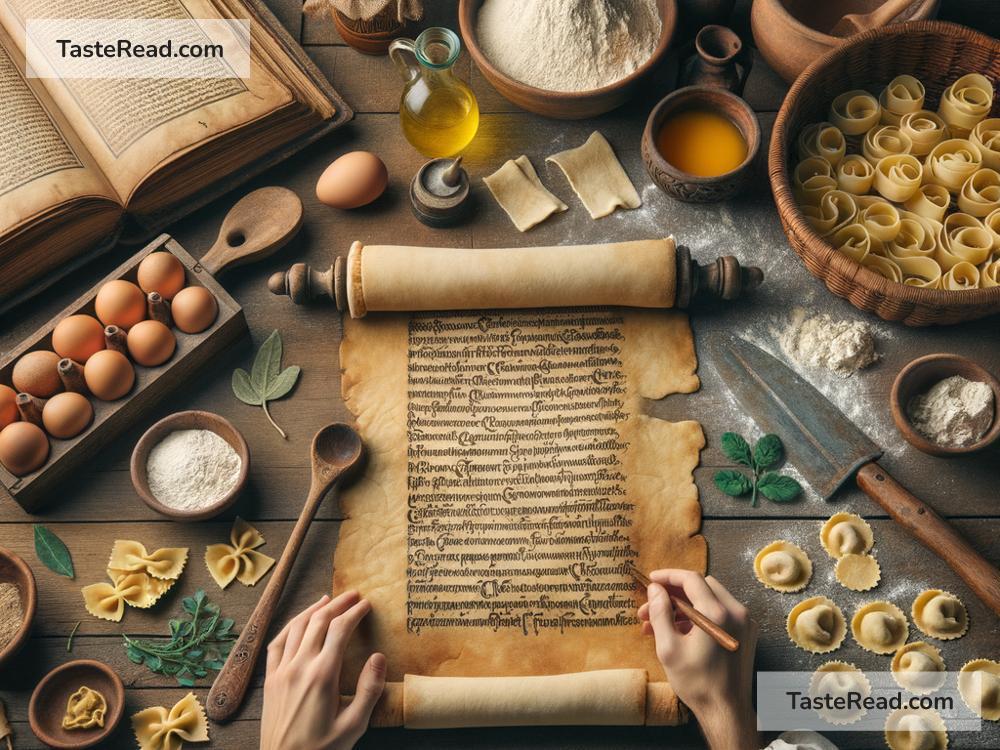Origins of the First Ravioli in Ancient Tales
Imagine biting into a little parcel of pasta, filled with delicious treasures. That’s ravioli! It’s a dish loved by many across the globe. But have you ever wondered where ravioli came from? It turns out, the story of ravioli is a journey through ancient times, blending history, myth, and food traditions. Let’s find out how this tasty creation came to life.
Ancient Tales and Early Beginnings
The origins of ravioli are wrapped in mystery. While many people associate it with Italy, similar traditions of filling dough existed long before ravioli became famous. Some experts say the idea can be traced back to ancient civilizations, including China and the Middle East.
One fascinating tale is about Marco Polo, the Venetian explorer who visited China in the late 1200s. According to popular stories, Polo brought back Chinese dumplings after traveling along the Silk Road. These dumplings inspired Italian chefs to create their version, which eventually became ravioli. However, historians are divided on whether this story is entirely true. It’s possible that Italians already had their own tradition of stuffed pasta long before Polo’s travels.
Another theory is that ravioli’s ancestors came from Arab cultures during the Middle Ages. The Arabs introduced stuffed pastries and dough-based dishes to Europe, especially in Sicily. These ideas spread across Italy and became an important part of its cuisine, eventually evolving into ravioli.
The Word “Ravioli”
The name “ravioli” itself has interesting roots. It comes from an old Italian word, “riavvolgere,” meaning “to wrap” or “to fold.” This perfectly describes ravioli, which is dough wrapped around a filling. The term first appeared in Italian literature in the 14th century. It shows that people were already making stuffed pasta long before ravioli was famous worldwide.
Early Recipes in History
One of the first written mentions of ravioli comes from a manuscript in the 1300s, written by Francesco di Marco Datini, a wealthy merchant from Tuscany. In this text, ravioli is described as pasta stuffed with cheese and herbs, cooked in broth instead of tomato sauce. Tomato sauce hadn’t yet arrived in Italy, as tomatoes only came from the Americas much later in the 1500s.
During the Renaissance, ravioli gained even more popularity. Wealthy families in Italy served ravioli at feasts and celebrations. Recipes might include fillings like ricotta cheese, spinach, spices, or even meat. The creativity of Italian cooks brought many unique ravioli flavors into existence, and different regions began to develop their own styles.
Myths and Legends Surrounding Ravioli
Stories about ravioli are not just historical—they’re also mythical! One charming legend comes from the Liguria region of Italy. It tells of a shipwrecked sailor named Raviolo. He was stranded on the Italian coast and decided to cook something special using the humble ingredients he could find. He wrapped delicious fillings in sheets of thin dough, inspiring the creation of ravioli. While there’s no proof this sailor even existed, the tale has captured the imaginations of many.
In Venice, another whimsical tradition celebrates “casanova ravioli.” Some old romantic stories say that these tasty little parcels were used to woo lovers because they were seen as a luxurious and decadent dish. Whether fact or fiction, ravioli has always had a magical charm!
Ravioli Across the World
While ravioli is deeply connected to Italian cuisine, similar dishes exist in many cultures. For example, Chinese dumplings like jiaozi and wontons share the idea of wrapping fillings inside dough. The Middle Eastern sambusak and Indian gujiya are also examples of dishes that might be considered cousins to ravioli.
Years ago, Italian immigrants carried their ravioli recipes to America, and the dish quickly gained fame there. Today, you can find ravioli in supermarkets, frozen meals, and gourmet restaurants. The fillings range from classic cheese and spinach to modern twists like lobster or pumpkin.
Why Ravioli Stands the Test of Time
Ravioli is more than just food; it’s a memory, a tradition, and a connection to history. In every bite, you can taste the blending of cultures, the creativity of chefs, and the enduring love for good food. The ability to customize ravioli is part of its magic. People can experiment with fillings, sauces, and shapes, making it a dish for any occasion.
What started as a simple idea—wrapping tasty fillings inside dough—has become a masterpiece known worldwide. Whether boiled, baked, or fried, ravioli brings comfort and joy to millions.
Conclusion
The origins of ravioli are rooted in ancient tales and global history. From Marco Polo’s journeys to medieval manuscripts, the story of ravioli reflects the movement of cultures and ideas. But whether its roots are in China, the Middle East, or straight from Italy itself, ravioli has become one of the world’s most beloved dishes.
Next time you enjoy ravioli, take a moment to think about its incredible journey. This little pasta parcel carries centuries of history, blending tradition with taste in every bite. Whether you’re making ravioli at home or ordering it at a restaurant, you’re enjoying a food that embodies creativity and connection. Truly, ravioli is a timeless treasure!


